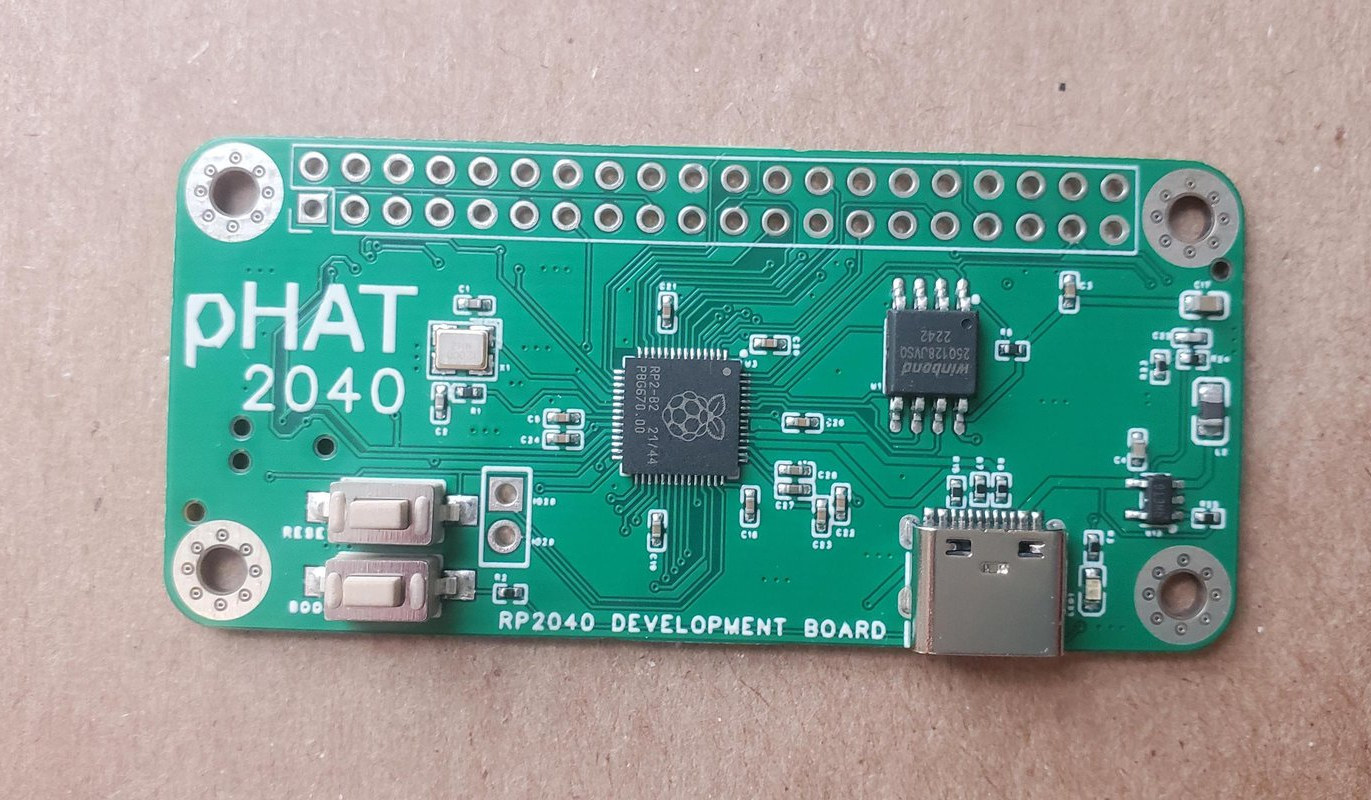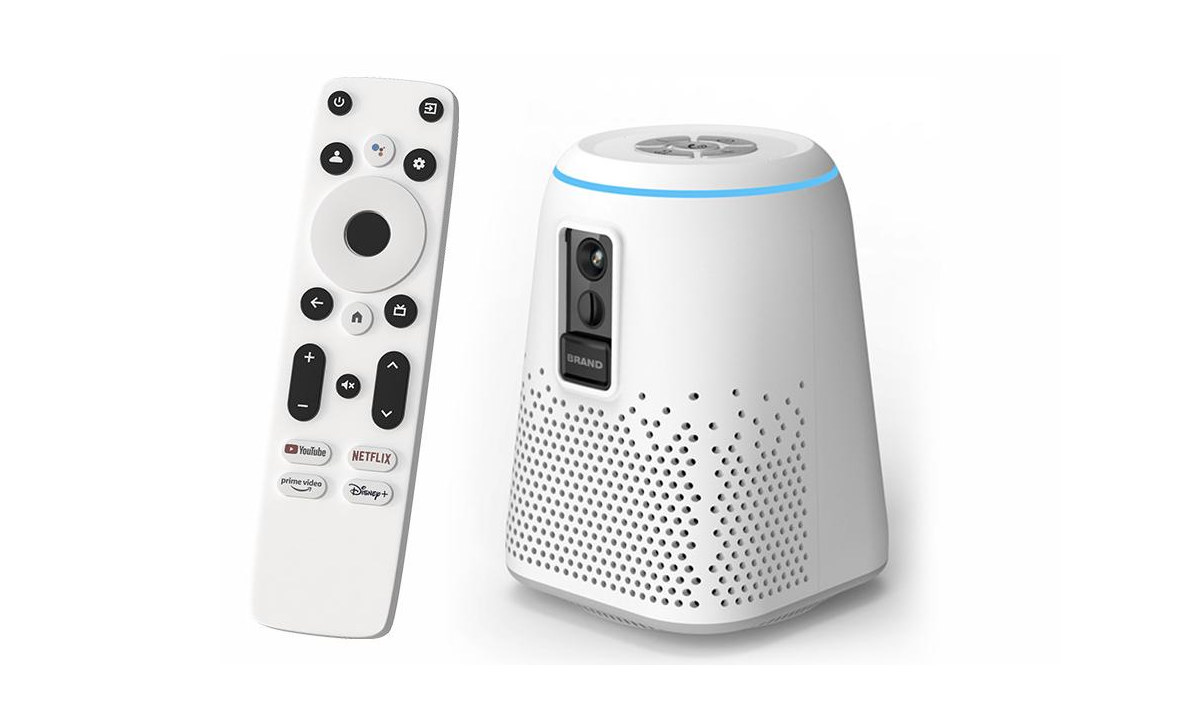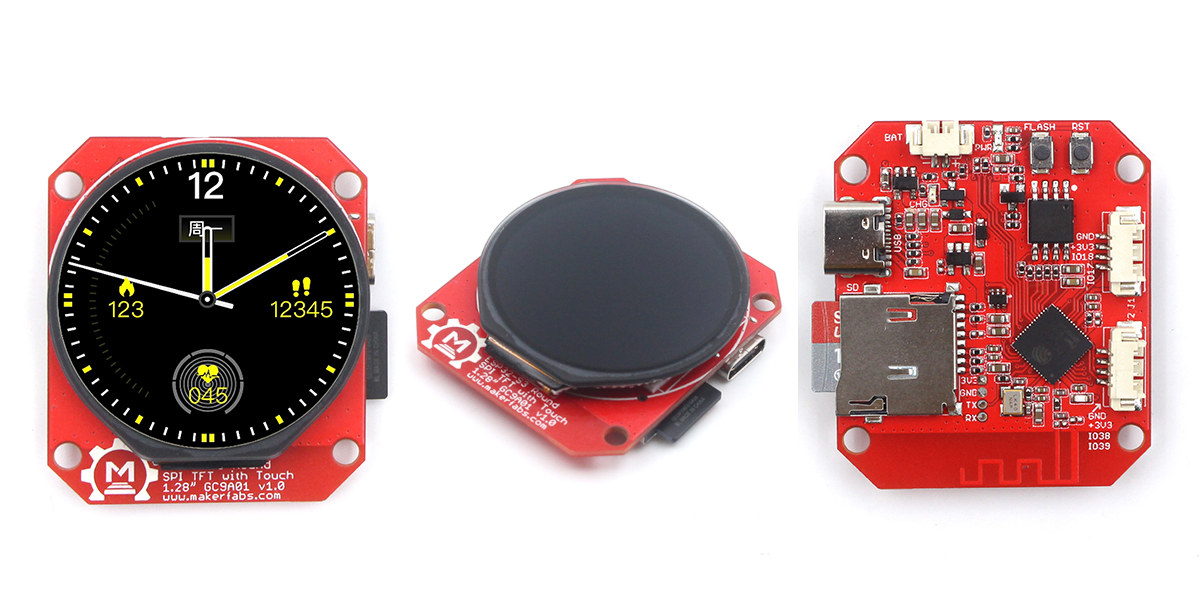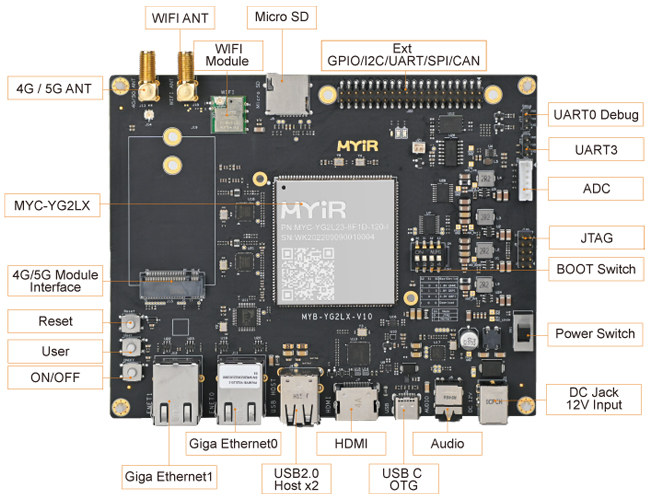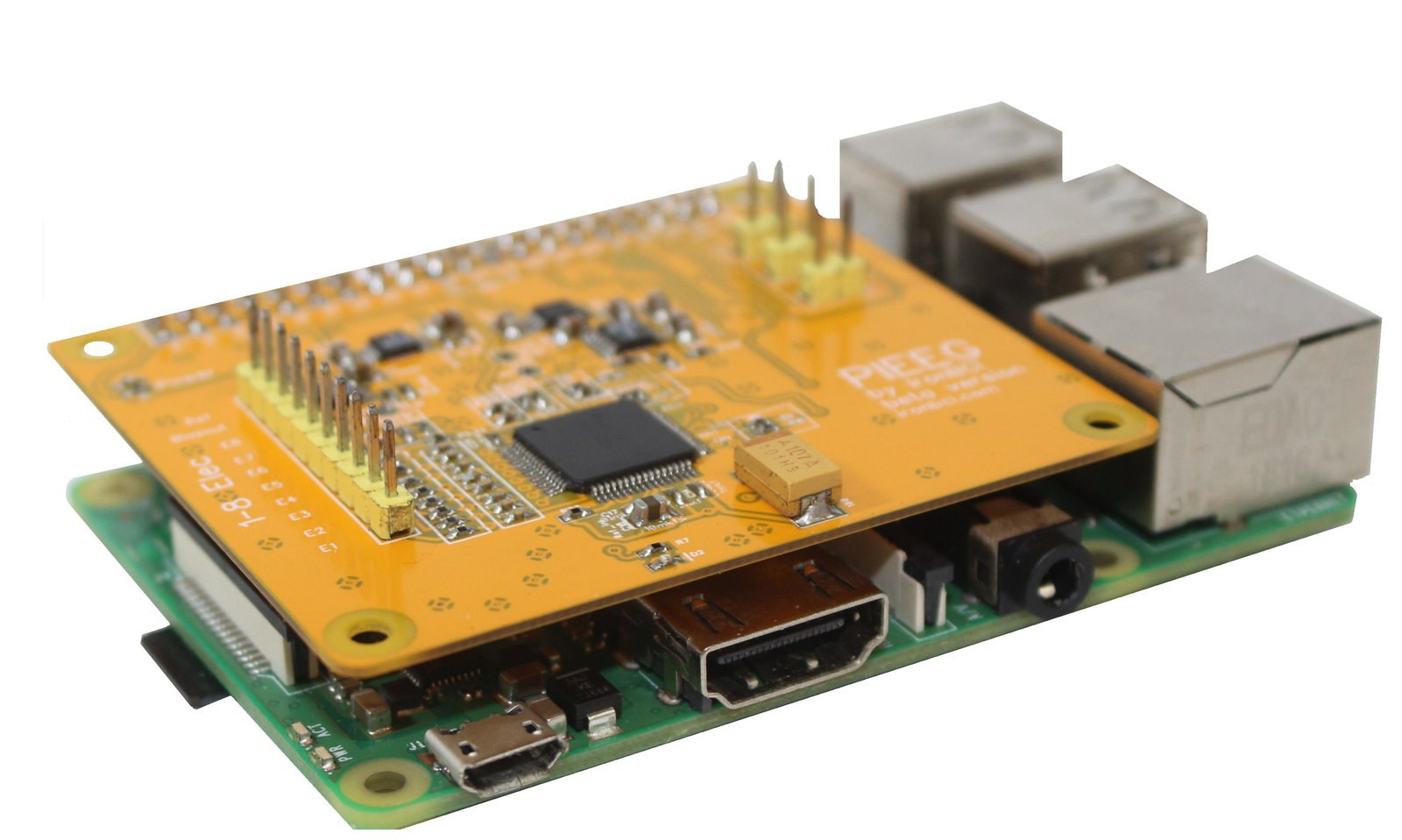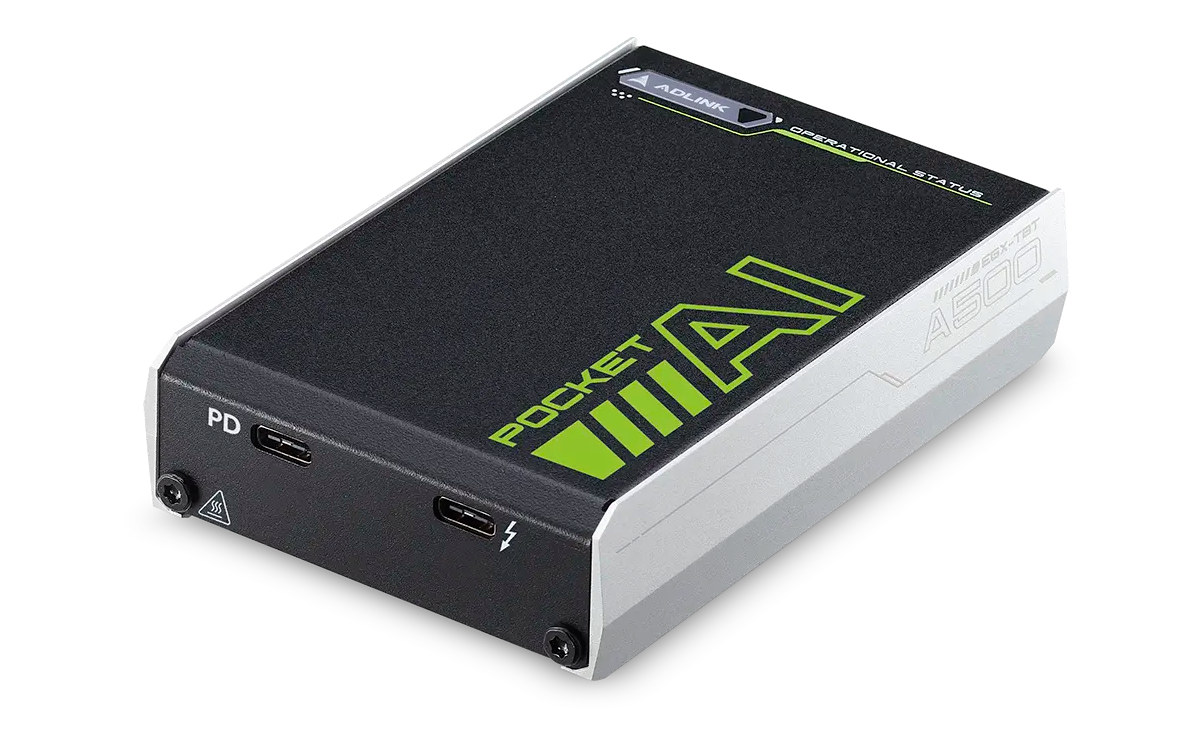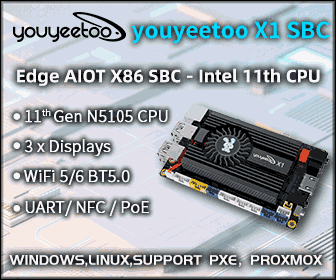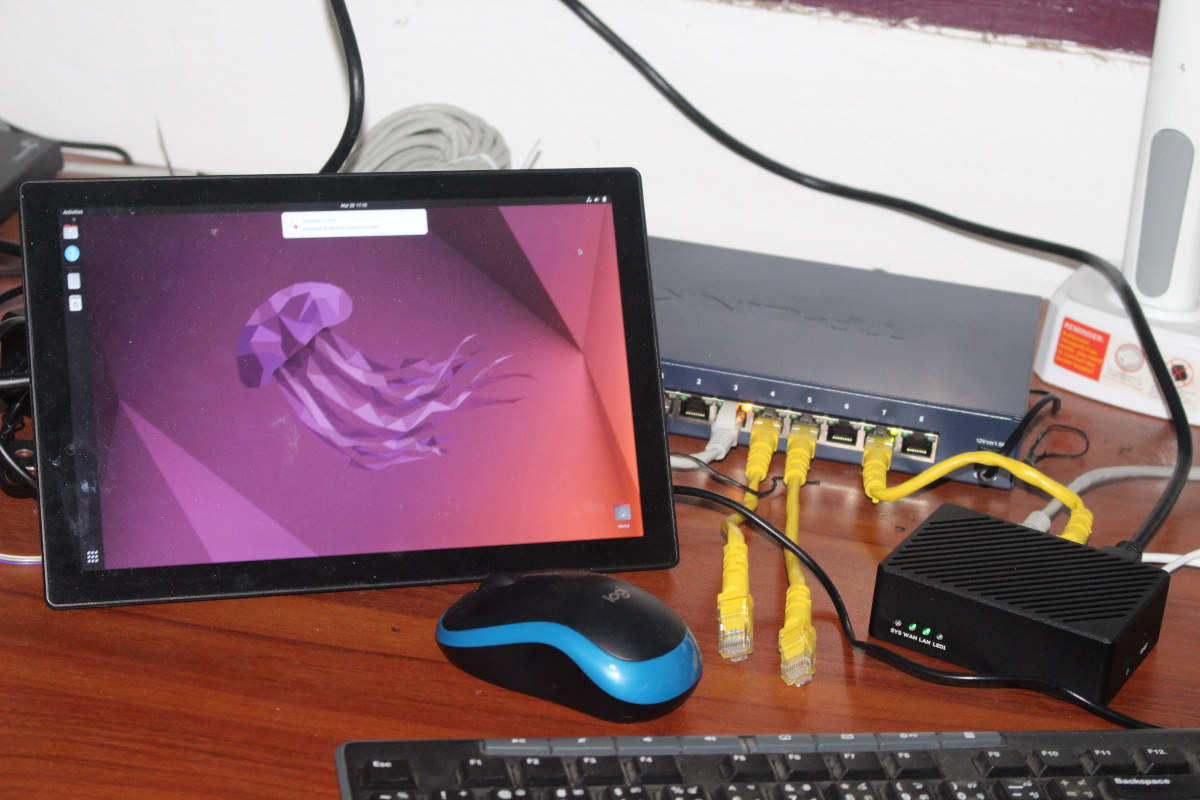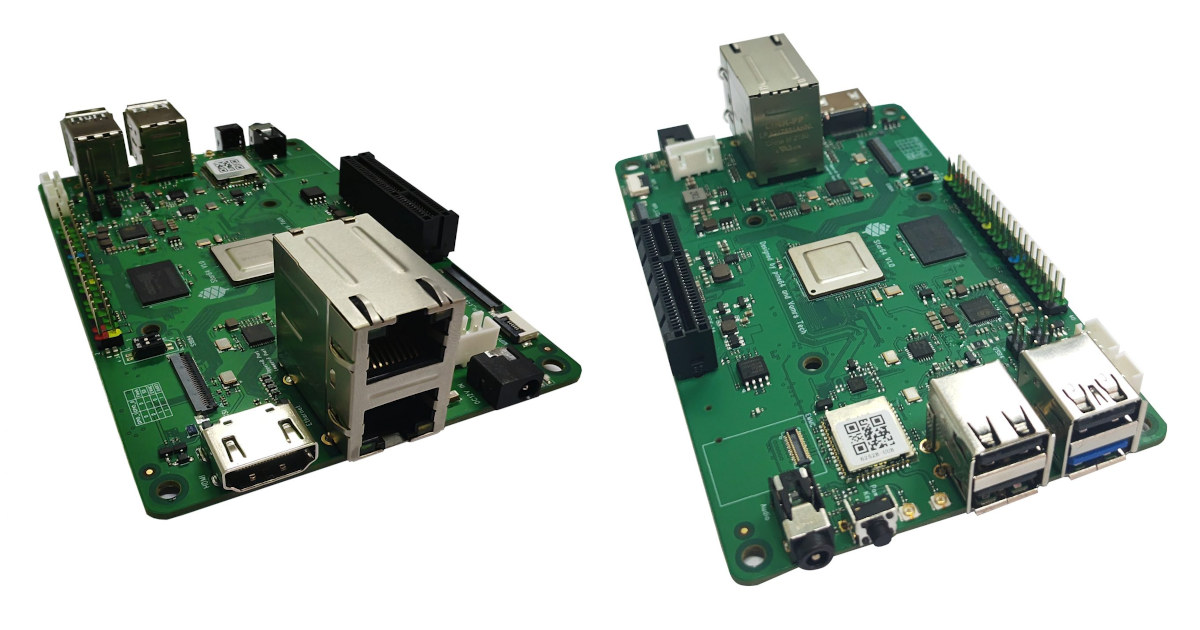0xC0FFEE’s RP2040 PHAT is both a Raspberry Pi RP2040 development board and a pHAT for Raspberry Pi and Pi Zero Linux SBCs that exposes the I/Os through the 40-pin GPIO header traditionally found in Raspberry Pi single board computers. The board comes with all features of the Raspberry Pi Pico board including a USB port for power and programming, an SPI flash, and a BOOT button, but also adds a Reset button. That means it’s software compatible, except for the user LED connected to GPIO 26, and works with the MicroPython and C SDKs, as well as the Arduino IDE, Zephyr RTOS, and more. RP2040 pHAT specifications: MCU – Raspberry Pi RP2040 dual-core Cortex-M0+ microcontroller @ 133 MHz with 264KB SRAM Storage – 128Mbit SPI flash (based on the chip in the photo above) USB – 1x USB 1.1 Type-C port used for power and programming Expansion – 40-pin Raspberry […]
Videostrong HC1 Home Care Hub for the elderly serves as Smart Speaker, Smart Home gateway, video phone
Videostrong HC1 Home Care Hub is a Smart Home/IoT gateway designed for the elderly that also serves as a smart speaker with 10-meter far-field voice recognition, a video phone with a video built-in camera and speaker, and a 4K Android TV box. The system is based on an Amlogic S905Y4 quad-core Cortex-A35 processor coupled with up to 4GB RAM and 64GB RAM, supports Ethernet, WiFi, Bluetooth, Zigbee, and LoRa, WiFi, and Bluetooth connectivity, and offers both HDMI 2.1 video output, and HDMI 2.0 video input. HC1 specifications: SoC – Amlogic S905Y4 quad-core Arm Cortex-A35 @ 2.0GHz with Arm Mali-G31 MP2 GPU with OpenGL ES 3.2 support System Memory – 2GB or 4GB RAM Storage – 8GB, 16GB, 32GB, or 64GB eMMC flash Video Output – HDMI 2.1 port up to 4Kp60 Input Built-in 1920×1080 camera with 90° wide angle, manual cover, adjustable angle HDMI 2.0 port up to 4Kp60 Audio […]
ESP32-S3 based 1.28-inch round touchscreen display supports Arduino programming
Makerfabs “ESP32-S3 Round SPI TFT with Touch 1.28″ is a small ESP32-S3 with a 1.28-inch round color touchscreen display, a microSD card, support for USB and battery power, and two “Mabee” extension connectors. The board joins other ESP32-S3 round display boards such as the Lilygo T-RGB board or Seeed Studio’s Round Display for XIAO, but with a thinner design, and a square PCB with trimmed corners instead of a round PCB like the other two. ESP32-S3 Round SPI TFT with Touch 1.28″ (E32S3128GC) specifications: Wireless MCU – Espressif Systems ESP32-S3R8 dual-core Tensilica LX7 microcontroller @ 240 MHz with vector extension, 512KB SRAM, 8MB PSRAM, Wi-Fi 4 & Bluetooth 5.0 dual-mode (Classic + BLE) connectivity Flash – 128 Mbit (16MB) W25Q128JV SPI flash, microSD card slot Display – 1.28-inch round LCD with 240×240 resolution (GC9A01 SPI driver), touchscreen controller (CST816S) USB – 1x USB Type-C port Expansion 1x 4-pin Mabee I2C […]
Renesas RZ/G2L CPU module targets HMI and IoT gateway applications
MYIR MYC-YG2LX is Renesas RZ/G2L CPU module with up to 4GB DDR4, 32GB eMMC flash, and various I/Os such as gigabit Ethernet, USB 2.0, camera and display interfaces accessible through 222 castellated holes, and designed for advanced HMI, IoT edge gateways, and other embedded devices with video capabilities. As a reminder, the Renesas RZ/G2L microprocessor comes with up to two Arm Cortex-A55 cores clocked at 1.2 GHz, one 200 MHz Cortex-M33 real-time core, a Mali-G31 GPU for 3D graphics interfaces, and a VPU capable of H.264 encoding/decoding. The company also offers the MYD-YG2LX development board based on the 45x43mm MYC-YG2LX CPU module with easy access to its interfaces. MYIR MYC-YG2LX Renesas RZ/G2L CPU module MYC-YG2LX module specifications: SoC – Renesas RZ/G2L (R9A07G044L23GBG) dual-core Cortex-A55 processor with Cortex-M33 core @ 200 Mhz, Arm Mali-G31 GPU, H.264 hardware video decoding/encoding System Memory – 1 or 2GB DDR4 (option for up to 4GB) […]
PiEEG shield for Raspberry Pi enables brain computer interfaces (Crowdfunding)
PiEEG is an open-source hardware Raspberry Pi shield that measures electroencephalography (EEG), electromyography (EMG), and electrocardiography (ECG) bio-signals and provides a brain-computer interface to applications or robots for gaming, entertainment, sports, health, etc… Ildar Rakhmatulin, a Research Associate at Heriot-Watt University in Edinburgh, is passionate about open-source brain-computer interfaces and first created the IronBCI project based on ADS1299 and STM32 and published a research paper entitled “Low-cost brain computer interface for everyday use” about his work. But cost increases related to the semiconductors shortage of recent years meant the price for his “low-cost” project shot up to over $1,000. So he went back to the drawing board and created the PiEEG shield for Raspberry Pi now available on Crowd Supply. PiEEG shield specifications: ADC – Texas Instruments ADS1299 Analog-to-Digital Converter for biopotential measurements Supported SBCs – Raspberry Pi 3 or 4, and boards with the same 40-pin GPIO header. Host […]
Pocket AI – A portable NVIDIA RTX A500 eGPU for AI developers, embedded & industrial applications
We’ve previously seen it’s possible to connect an eGPU to a mini PC through a PCIe x16 to M.2 NVMe adapter or a Thunderbolt 3 port, but while it’s fine to install on your desk for gaming or develop AI applications, the eGPU being larger than most mini PCs, it’s a little too big to integrate into products, and potentially inconvenient to carry around. ADLINK Pocket AI portable eGPU changes that with an NVIDIA RTX A500 GPU housed in a 106 x 72 x 25mm box that’s about the size of a typical power bank and connects to a host through a Thunderbolt 3 connector. The company says the upcoming eGPU is mostly designed for AI developers, professional graphics users, and embedded industrial applications, but can also be for gaming. Pocket AI specifications: GPU – NVIDIA RTX 500 Architecture – NVIDIA Ampere GA107 Base clock: 435 MHz Boost clock: 1335 […]
NanoPi R6C review – Ubuntu 22.04, NVMe SSD, USB debug
FriendlyElec has recently announced the NanoPi R6C mini PC that a variant of the Rockchip RK3588S powered NanoPi R6S mini PC and 2.5GbE router that we reviewed with FriendlyWrt/OpenWrt and Ubuntu 22.04 earlier this year, but with just one 2.5GbE and one GbE interface, a built-in M.2 NVMe SSD socket and USB-C Debug UART port for easy external access to the serial console. The company sent me a NanoPi R6C sample for review, but since we’ve already tested the similar NanoPi R6S extensively, I’ll write a single-post mini review this time around, checking out the hardware, and focusing on testing the new features such as the NVMe SSD and the USB debug port when running Ubuntu 22.04. NanoPi R6C unboxing As usual, the device came in a non-descript cardboard package with a few 3M rubber pads. The most obvious change compared to the NanoPi R6S is that all main ports […]
Pine64 Star64 SBC with StarFive JH7110 RISC-V SoC with GPU to launch for $69.99 and up
Pine64 Star64 is a single board computer (SBC) powered by StarFive JH7110 quad-core 64-bit RISC-V processor equipped with an Imagination BXE-4-32 GPU, and in a form factor similar to the earlier Pine64 model A boards such as the Quartz64 Model A. The Star64 SBC ships with either 4GB or 8GB of RAM, an HDMI 2.0 video output connector, two Gigabit Ethernet ports, a WiFi 6 and Bluetooth 5.2 module, USB 3.0 ports, a PCIe slot, and a GPIO header for expansion. Star64 specifications: SoC – StarFive JH7110 with CPU – Quad-core 64-bit RISC-V (SiFive U74 – RV64GC) processor @ up to 1.5 GHz GPU – Imagination BXE-4-32 GPU @ up to 600 MHz supporting OpenGL ES 3.2, OpenCL 1.2, Vulkan 1.2 VPU 4Kp60 H.265/H.264 video decoder 1080p30 H.265 video encoder System Memory – 4GB or 8GB LPDDR4 Storage – MicroSD card slot, eMMC flash module socket up to 128GB, 128Mbit […]


